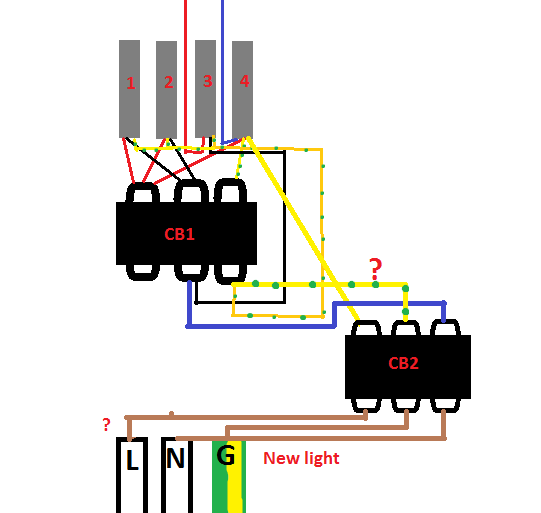Hey guys.
I'm trying to wire a new class 1 light in the kitchen. The light that was removed was double insulated and therefore was not grounded. The new one needs grounding, but I'm a noob at this and not sure I've got the wiring correct. (See diagram)
I have tried to follow the wiring diagrams on here as best I can without success.
I have move the ground from wire 4 and connected them to the other earth wires in the first choc block. Then connected another earth cable from choc block 1 to choc block 2, then from that to the wire. This seems to have worked however all of the lights are now flickering so obviously not!
Cheers
James
I'm trying to wire a new class 1 light in the kitchen. The light that was removed was double insulated and therefore was not grounded. The new one needs grounding, but I'm a noob at this and not sure I've got the wiring correct. (See diagram)
I have tried to follow the wiring diagrams on here as best I can without success.
I have move the ground from wire 4 and connected them to the other earth wires in the first choc block. Then connected another earth cable from choc block 1 to choc block 2, then from that to the wire. This seems to have worked however all of the lights are now flickering so obviously not!
Cheers
James


